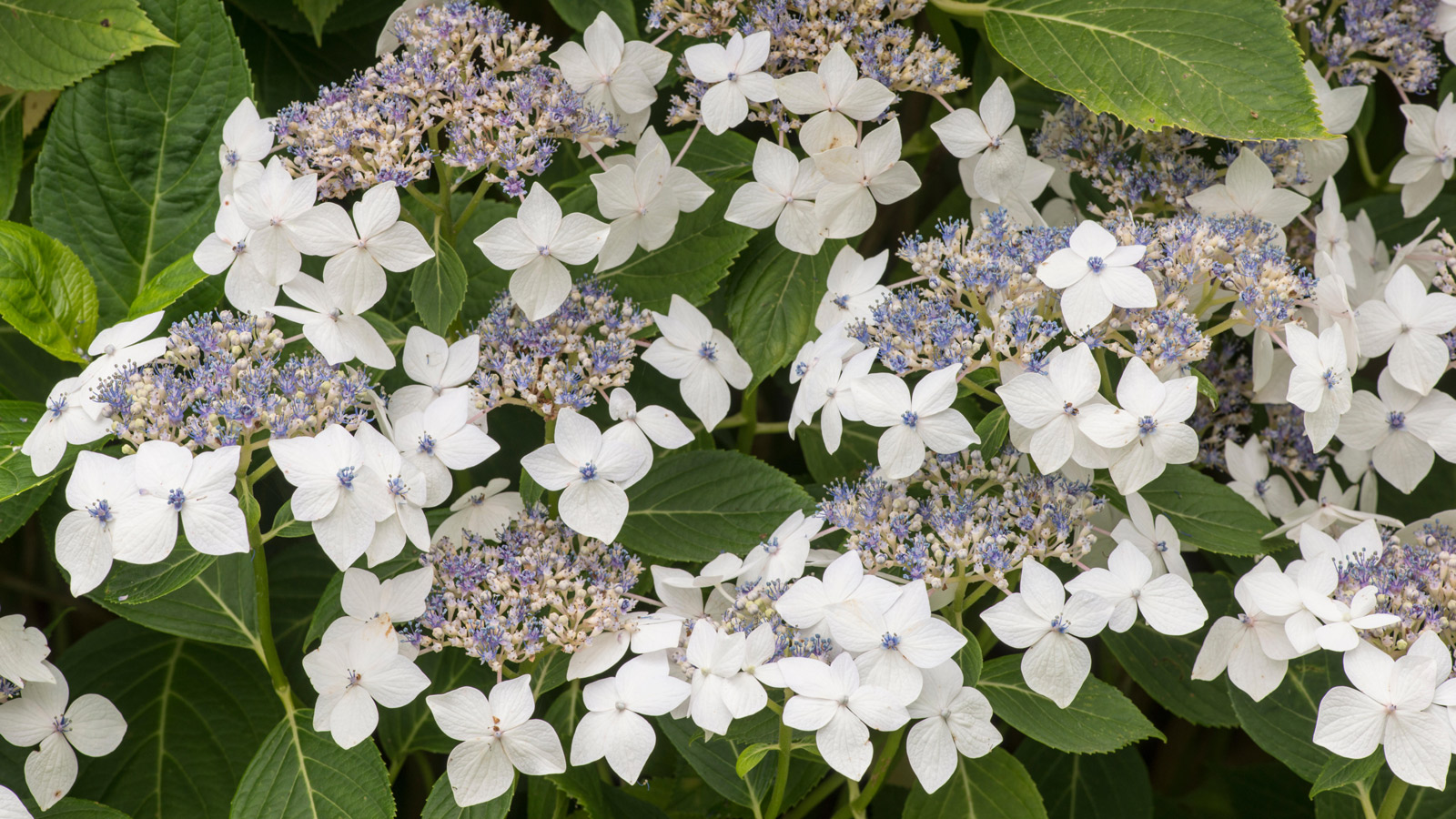
Deciding which hydrangea varieties are best for your garden can be mind-boggling. The hydrangea is America’s most popular deciduous shrub and comes in a dizzying range of shapes and tones. Their bold summer blooms (spanning delicate lacecaps and generous mopheads) come in all kinds of reds, purples, pinks, creams, greens and whites. These attractive flowering shrubs create dynamic texture even in compact beds and borders, and can even be cultivated in large containers.
Many types of hydrangea combine a tolerant and adaptable nature with astonishing summer and fall colors. Capable of growing in hardiness zones USDA Z3-5, many have flowers that change color as they mature and become more vivid at the end of the season. When you grow hydrangeas, you will find that several varieties change color according to the lime content of the soil in which they grow. They become more blue in acid (lime-free) soils and pink in alkaline (limey) soils.
These easy-to-grow shrubs are improving all the time, and modern varieties continue to extend their versatility. As well as new tones and color combinations, several have improved shape, more attractive foliage, or a longer flowering season. These developments have added to many fine varieties, some of which have been popular for over 100 years. This selection will help you pick the perfect hydrangea for your needs.
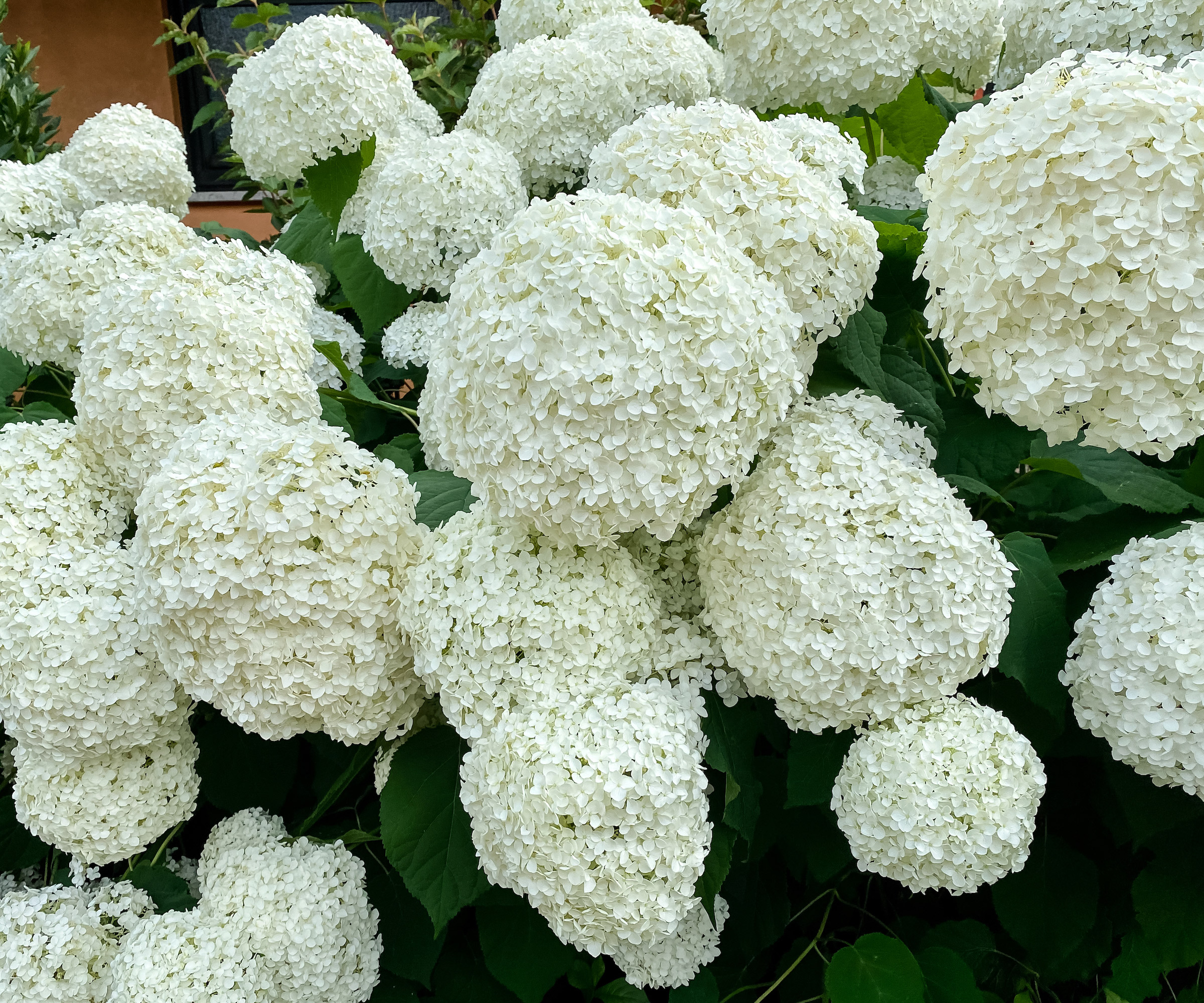
15 lacecap and mophead hydrangea varieties for beds and borders
The best hydrangeas represent a diverse range of tones and textures from giant globes to delicate cones. As the experts at Proven Winners point out, hardier and showier varieties of these best fast growing shrubs are being developed every year. ‘Their versatility in sun to shade and their bold blooms make them must-have shrubs for every garden.’
For smaller gardens and containers, there is Little Quick Fire or ‘Miss Saori’, while for cooler zones you can try Pinky-Winky. Meanwhile, the Endless Summer Series and Let’s Dance Series offer excellent reblooming options. Whether you prefer panicle (PeeGee) or smooth spherical types, these mophead and lacehead hydrangea varieties are all available from a range of garden centers and online retailers.
- Shop hydrangea at Burpee
- Shop hydrangea at Nature Hills
- Shop hydrangea at Proven Winners
- Shop hydrangea at Spring Hill Nursery
1. Hydrangea ‘Bluebird’
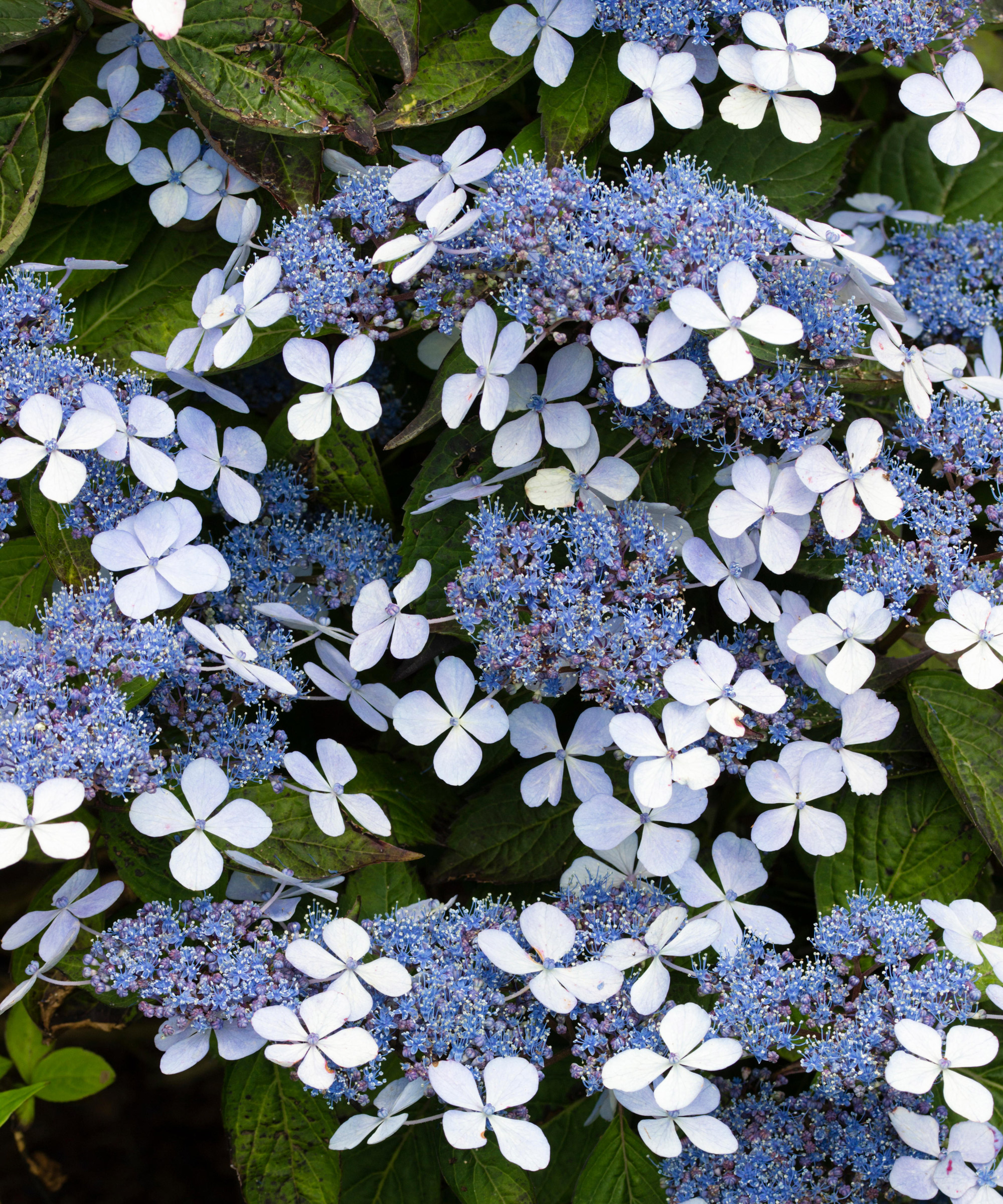
- Type: Lacecap (Hydrangea serrata)
- Hardiness: USDA Z5
- Height: 4ft
- Good for: Small gardens, good in shade
One of the best hydrangea varieties, ‘Bluebird’ is a resplendent lacecap. This classic hydrangea is ideal for small gardens as it is neat and bushy. A good option for shade, its flowers turn pink on alkaline soils. Purplish new growth gives way to slightly domed, scented mauve flowers with coppery autumn foliage. This hydrangea flowers from early summer to mid fall.
2. Hydrangea Endless Summer (‘Balimer’)
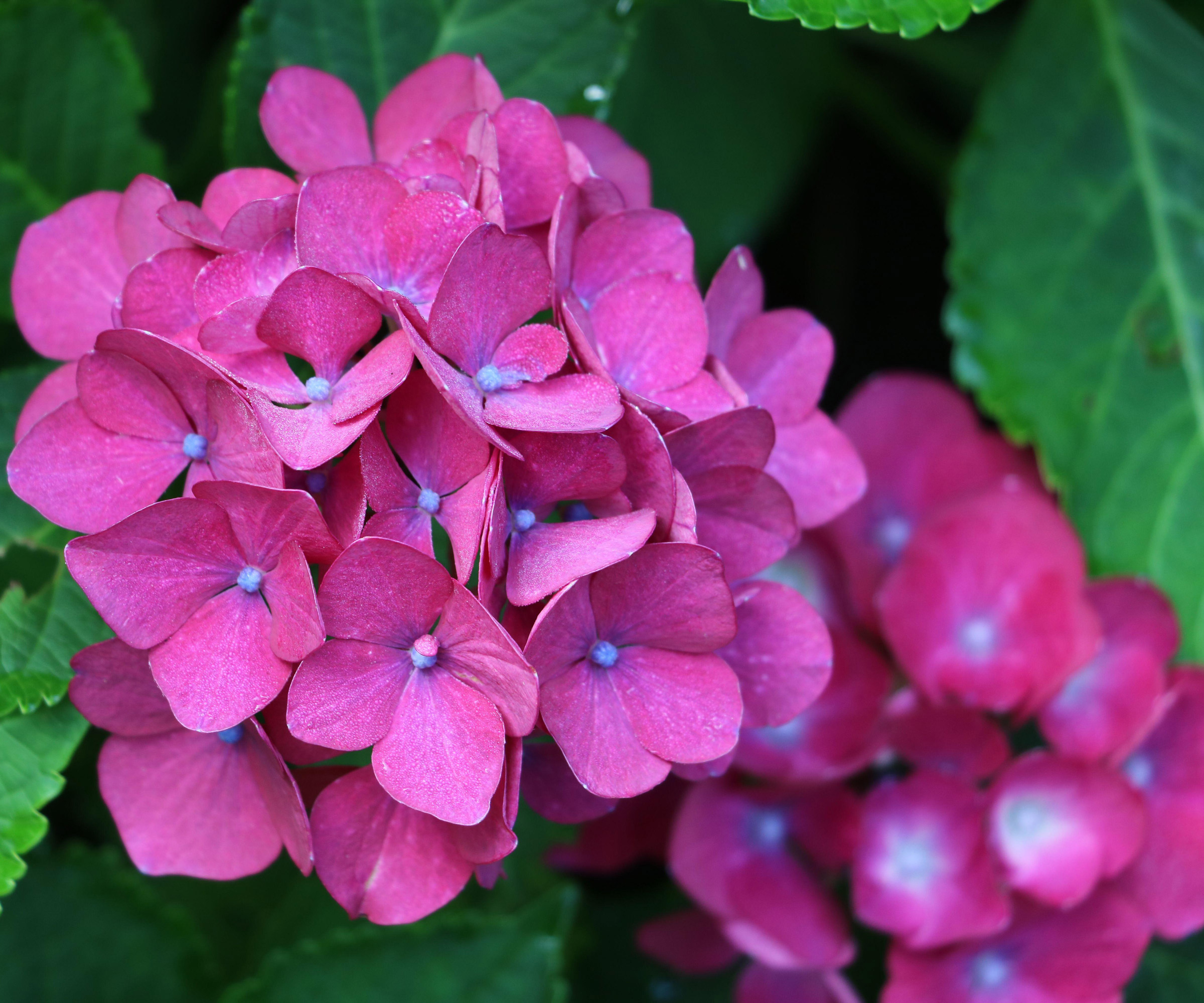
- Type: Mophead, reblooming (Hydrangea macrophylla)
- Hardiness: USDA Z5
- Height: 4ft
- Good for: Small gardens, low hedges
If you are looking for effective lawn edging ideas, this is one of the best hydrangeas for low hedges. It is also an excellent choice for small gardens. Endless Summer (‘Balimer’) is the first repeat-flowering mophead hydrangea. Blooming from early summer to mid fall, it is outstanding for its long season of color, now in six tones (including the first lacecap).
3. Hydrangea Fairytrail Bride Snow White (‘Ushyd0405’)
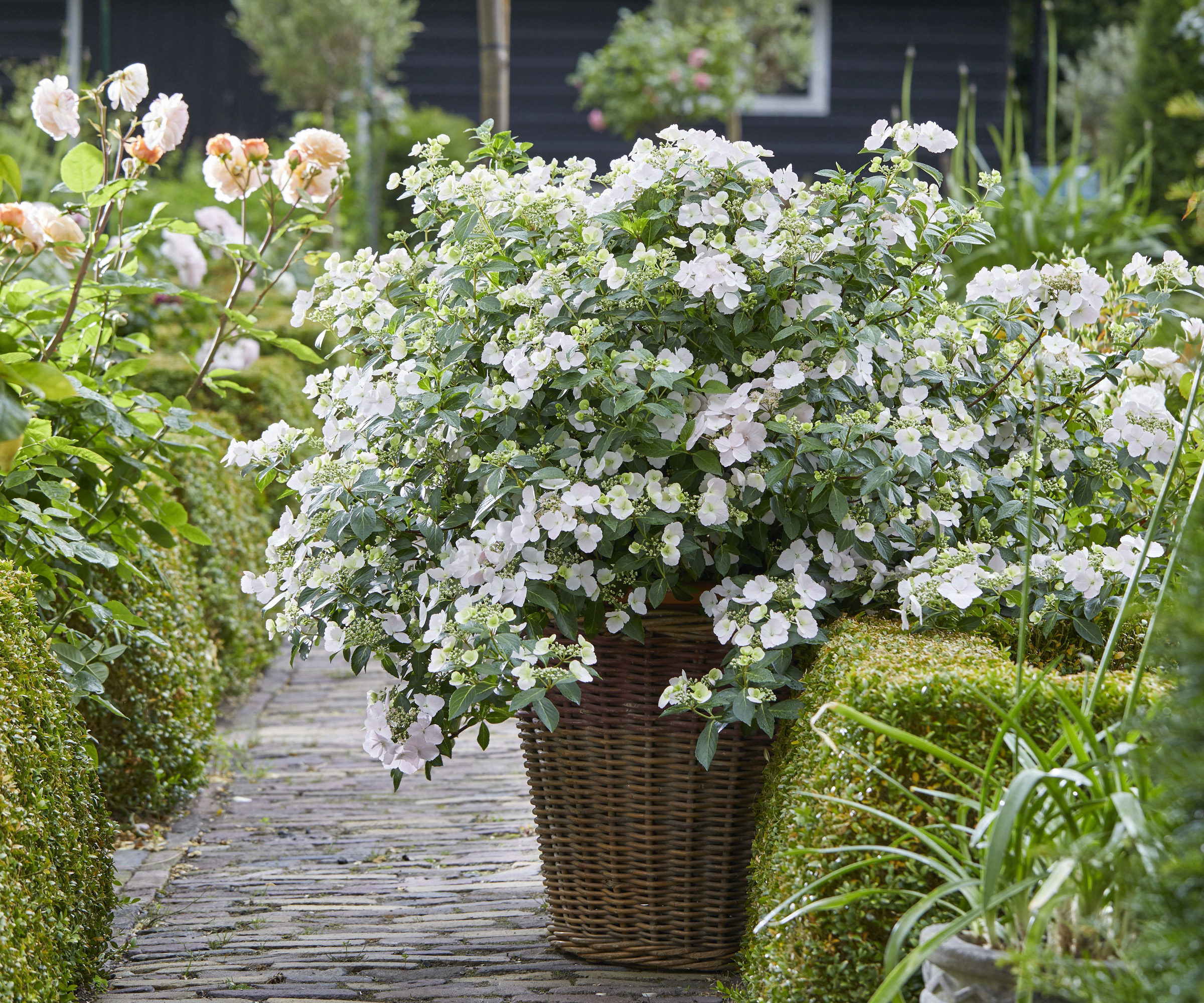
- Type: Lacecap, reblooming (hydrangea hybrid)
- Hardiness: USDA Z7
- Height: 1.2m
- Good for: Containers, small garden specimen
These are amongst the most compact types of hydrangea. They make ideal options for container gardening ideas as well as small garden specimens. Flowering from early summer to fall, these lacecap hybrids are known for reblooming over a long season. Fairytrail Bride Snow White (‘Ushyd0405’) is a weeping variety with a long season of white, sometimes pink-tinted flowers. It is also listed as the garland hydrangea.
4. Hydrangea ‘General Viscountess of Vibraye'
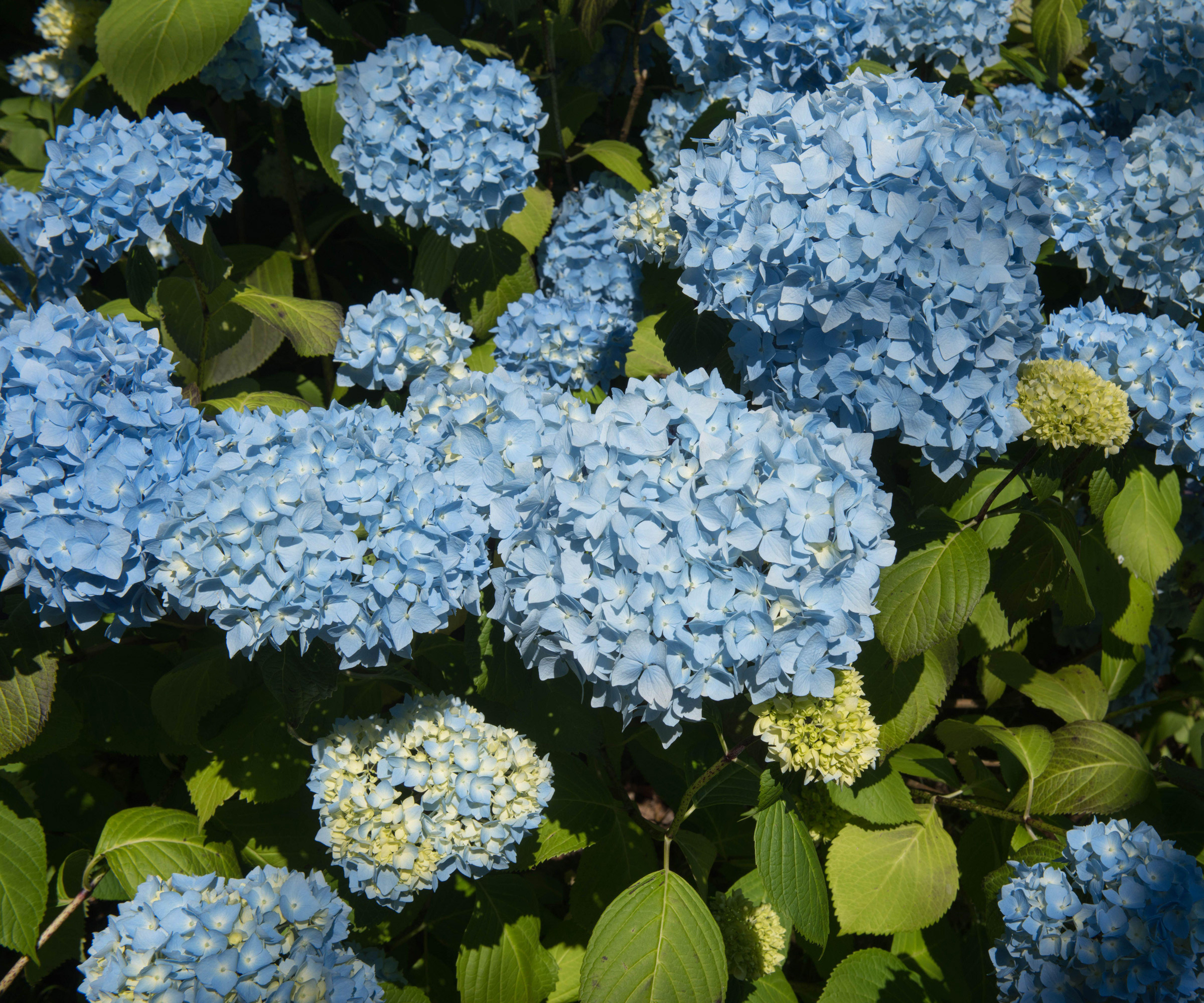
- Type: Mophead (Hydrangea macrophylla)
- Hardiness: USDA Z5
- Height: 6ft
- Good for: A bold specimen, responds well to drying
Another of the classic hydrangea varieties, ‘General Viscountess of Vibraye’ is a stylish blue mophead. It is a beautiful option if you are interested in cottage garden plants and also responds well to drying. This bold specimen is strong growing. Its large flowerheads are packed with florets that age harmoniously to pale green. Flowering from mid-late summer, the blooms also turn pink on alkaline soils.
5. Hydrangea ‘Grandiflora’
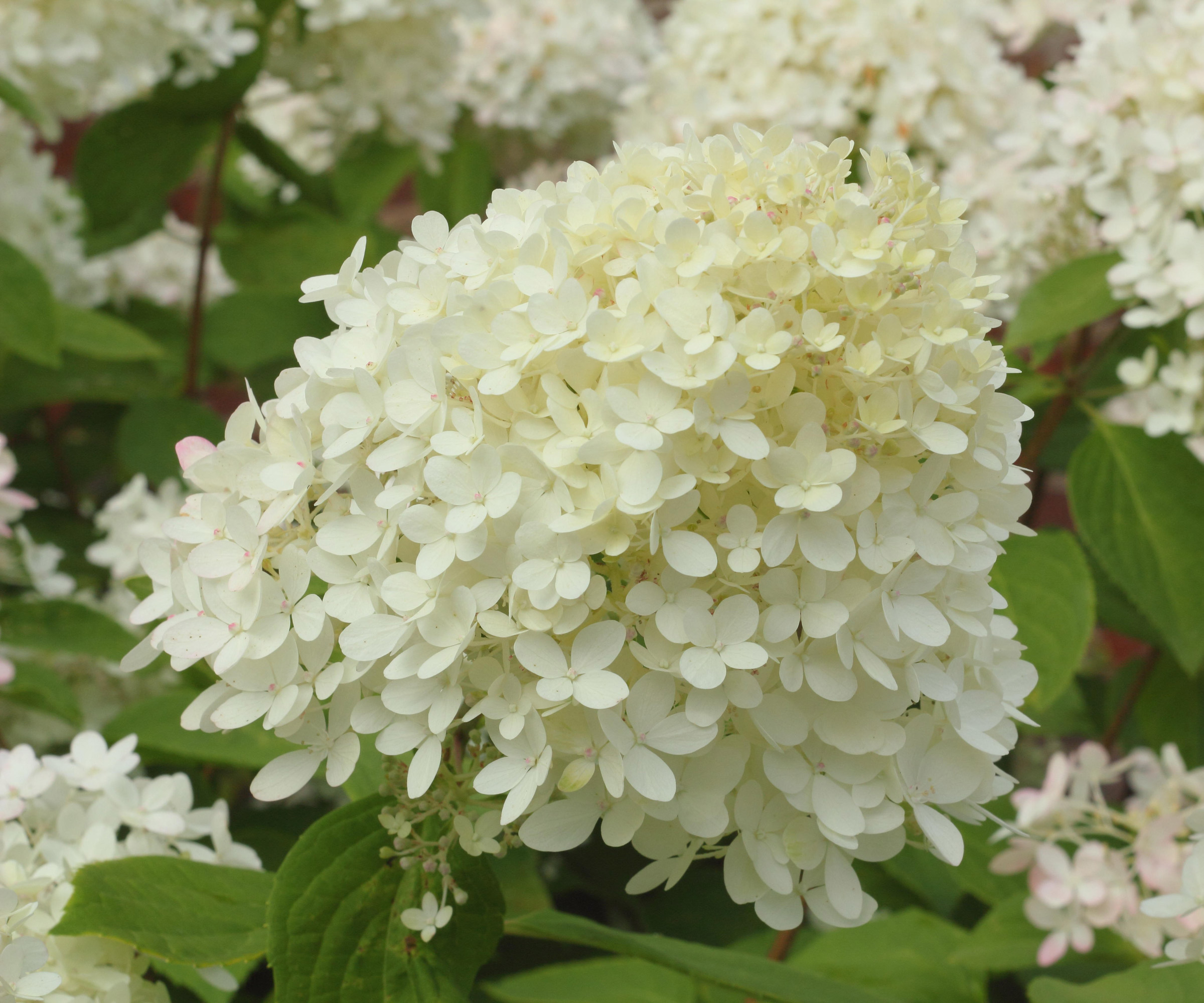
- Type: Cone flowered (Hydrangea paniculata)
- Hardiness: USDA Z5
- Height: 6-12ft (depending on pruning)
- Good for: Robust and adaptable growth
These cone flowered types of hydrangea are also old favorites. The classic PeeGee hydrangeas make stunning options if you are looking for brilliant white garden ideas that flower in mid-late summer and early fall. Robust and adaptable, ‘Grandiflora’ has large cone-shaped heads of white flowers that age to deep pink and maintain their color well.
6. Hydrangea Invincibelle Series
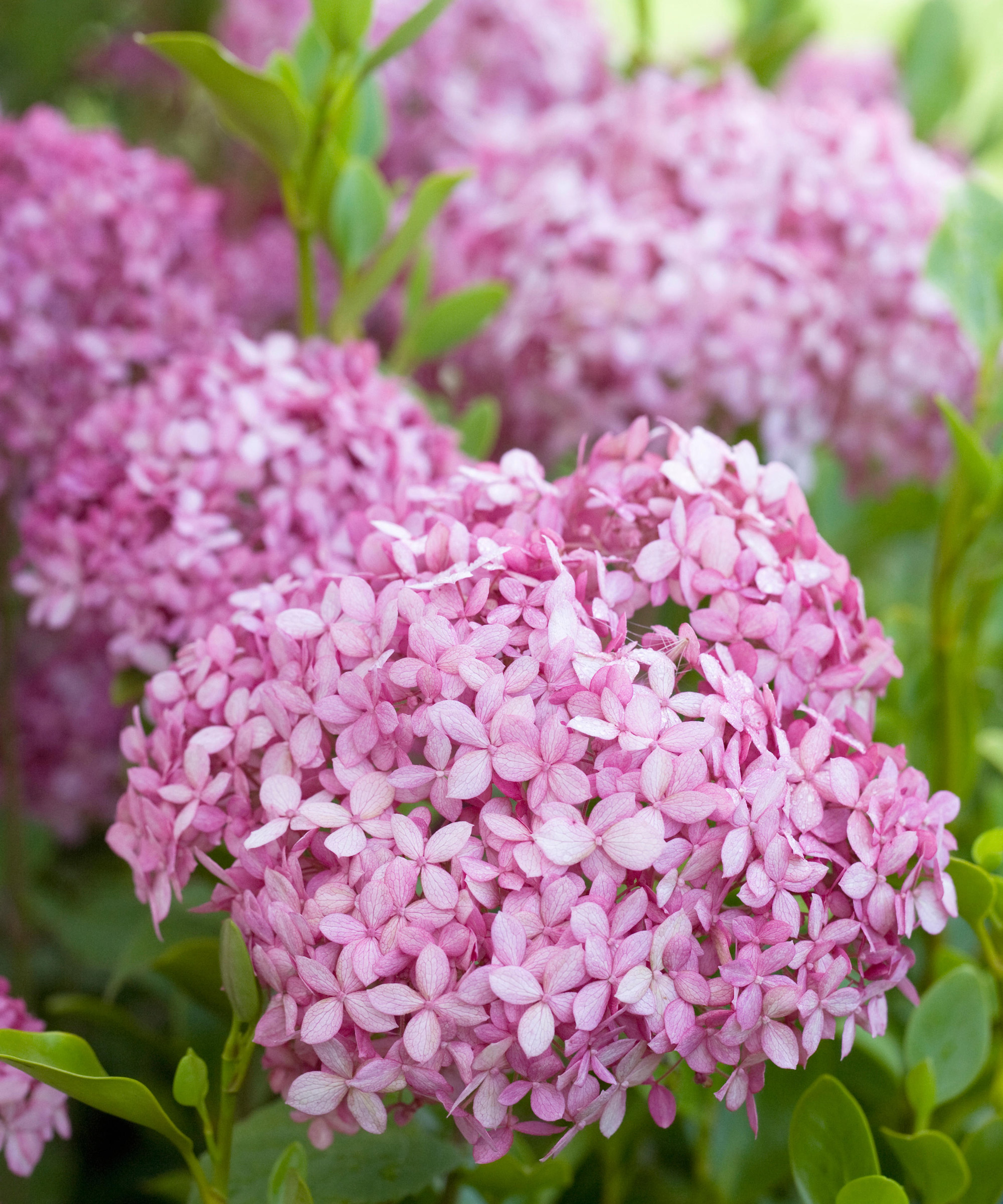
- Type: Mophead (Hydrangea arborescens)
- Hardiness: USDA Z3
- Height: 6ft
- Good for: Huge flowerheads
The huge, soft flowerheads of this dramatic mophead have been developed from the well-known ‘Annabelle’. Flowering from midsummer to fall, the Invincibelle Series with its striking blooms make ideal sensory garden plants and are also some of the best hydrangeas for cottage gardens and traditional plantings. Variations include shades from white through pinks to ruby red and green, plus yellow autumn leaf color.
7. Hydrangea ‘Lanarth White’
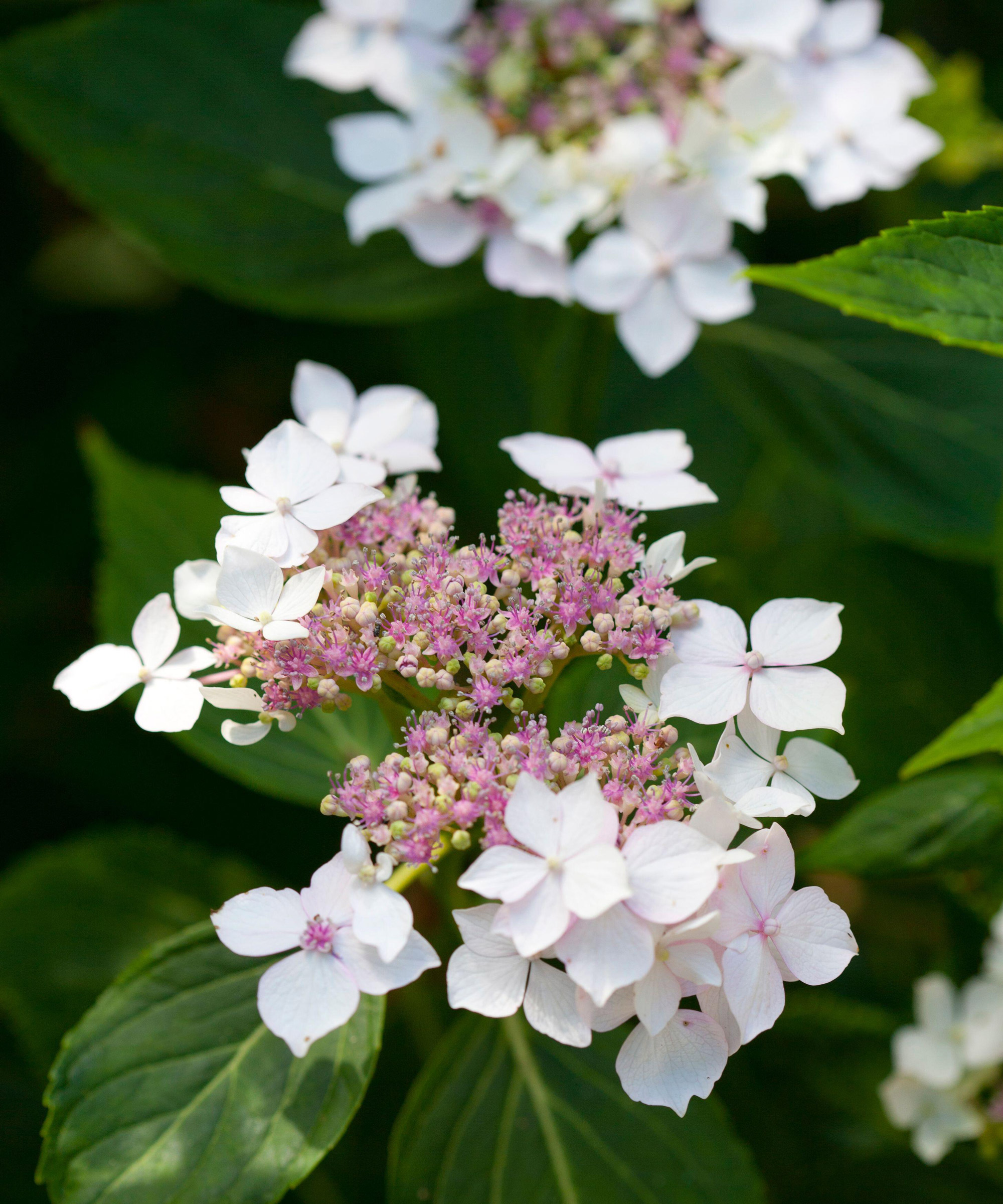
- Type: Lacecap (Hydrangea macrophylla)
- Hardiness: USDA Z5
- Height: 5ft
- Good for: Difficult areas where other hydrangeas struggle
As well as being one of the best shrubs for shade, ‘Lanarth White’ is amongst the finest classic hydrangea varieties if you desire pretty lacecap options. Flowering from early summer to early fall, it’s ideal for tricky spots where other hydrangeas struggle. Neat and bushy, a ring of showy white late summer florets surrounds a mass of tiny pink or blue florets.
8. Hydrangea Let’s Dance Series
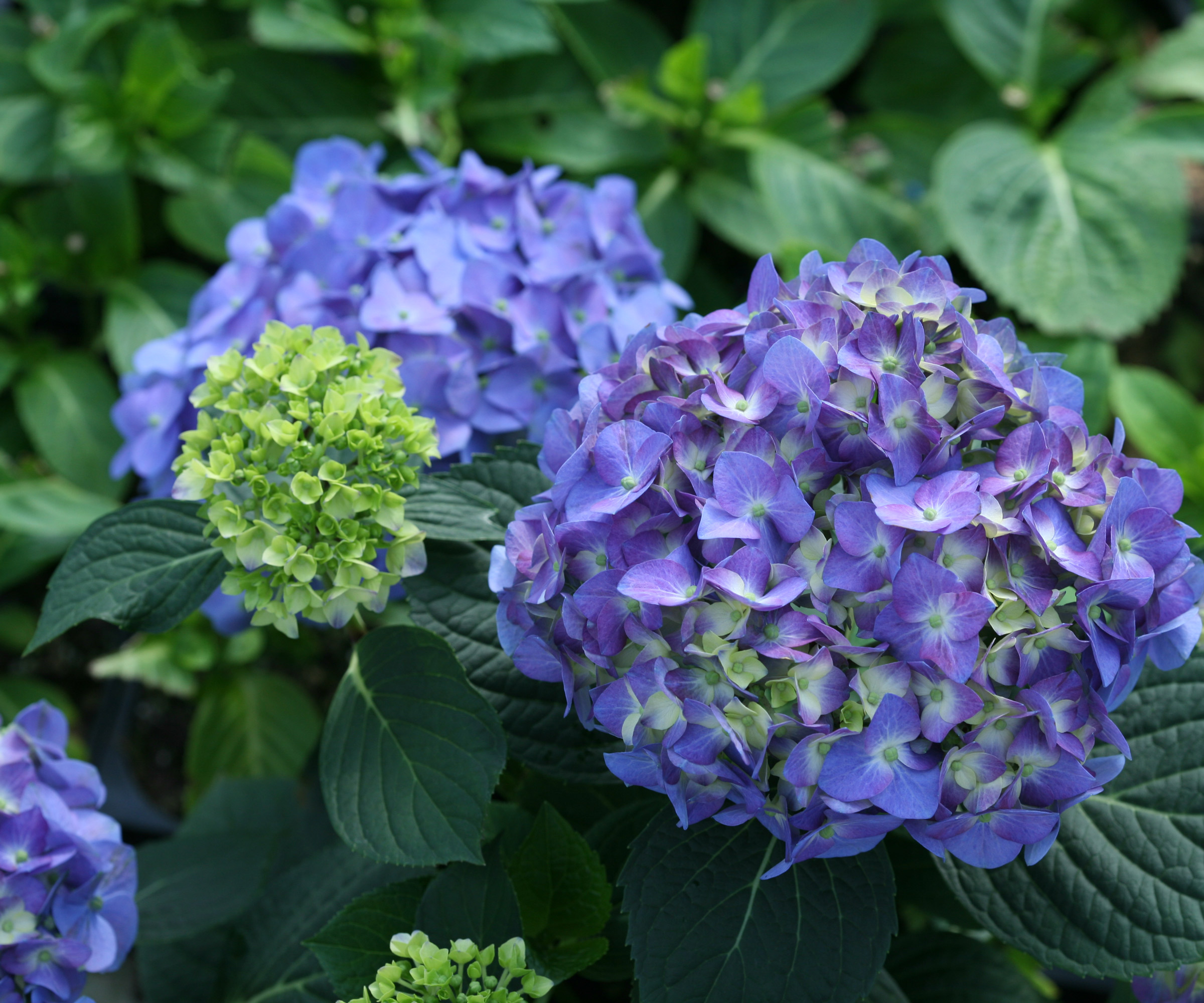
- Type: Mopheads and lacecap, reblooming (Hydrangea macrophylla)
- Hardiness: USDA Z5
- Height: 2-3ft
- Good for: Small yards, containers
If you want to grow hydrangeas in pots, the Let’s Dance Series includes several excellent reblooming types of hydrangea. These mopheads and lacecaps, which flower from early summer to early fall, are also great for small yards and modest spaces. The 11 compact varieties, developed in Michigan’s icy winters, include rich colors and bicolors, some with exceptionally large flowerheads.
9. Hydrangea ‘Limelight’
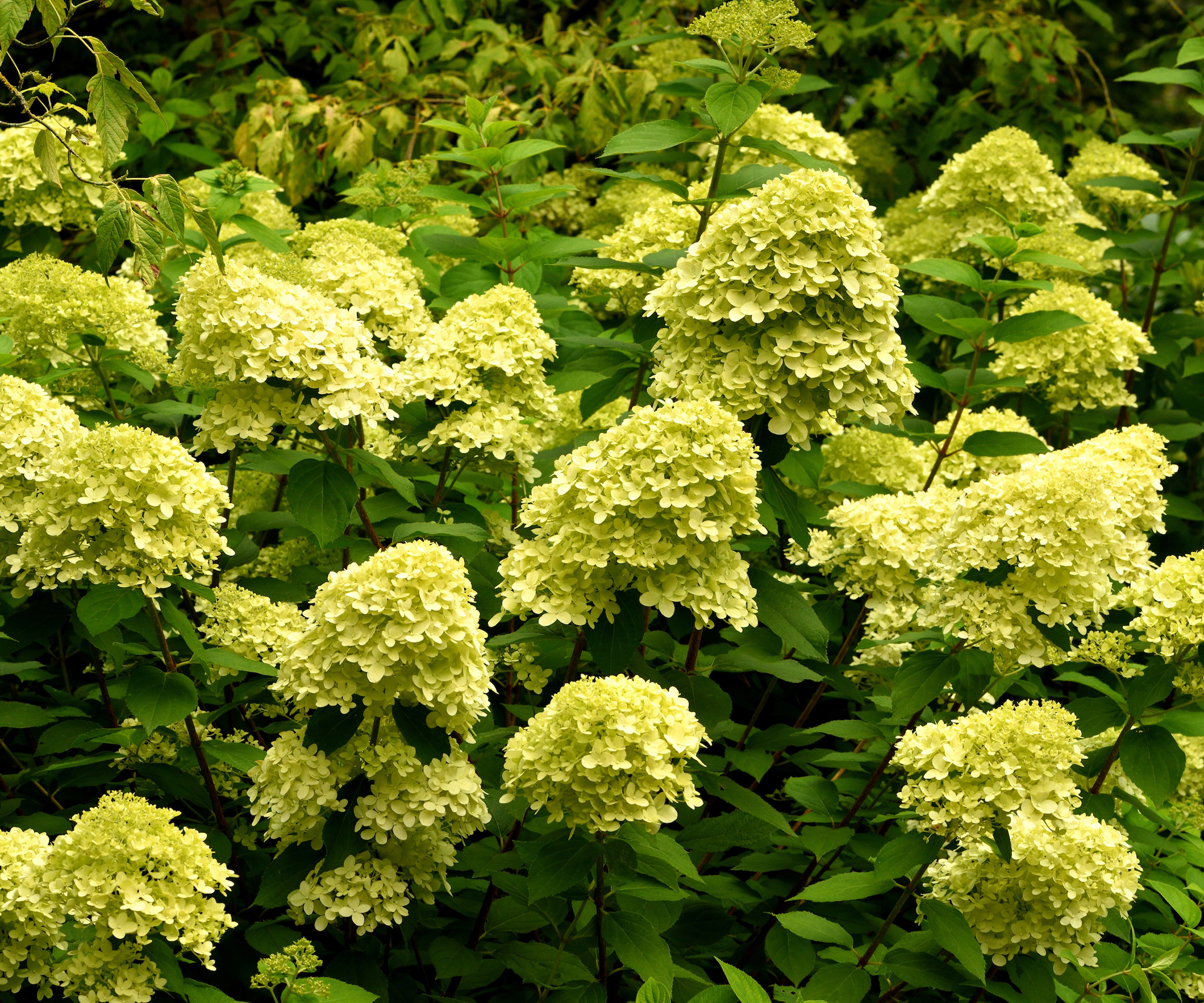
- Type: Cone-shaped (Hydrangea paniculata)
- Hardiness: USDA Z3
- Height: 6ft
- Good for: Small yards, mixed borders, cutting
For anyone interested in dramatic tones, cone-shaped ‘Limelight’ is a real showstopper. These are some of the best hydrangeas if you are after vivid flower bed ideas or rich citrussy notes for mixed borders. Flowering in late summer and fall, its stout stems carry pointed lime green spikes that get richer as they age, and develop pink tints towards the end of the season.
10. Hydrangea Little Quick Fire (‘SMHPLQF’)
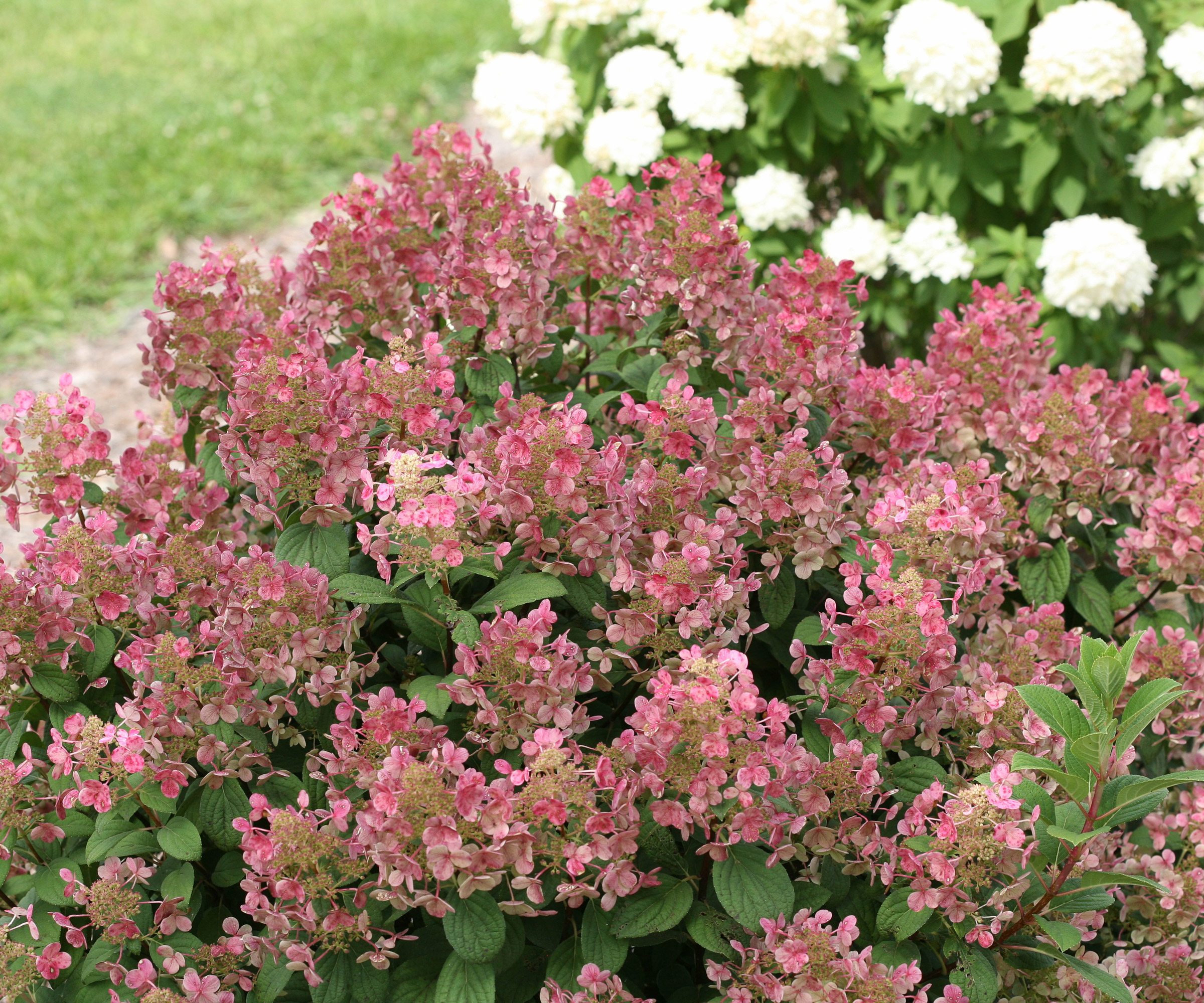
- Type: Cone-shaped (Hydrangea paniculata)
- Hardiness: USDA Z3
- Height: 3ft
- Good for: Accent plants in small yards, low hedges
Little Quick Fire (‘SMHPLQF’) is one of the most unusual hydrangea varieties if you want dramatic plants for fall color and rich tones. This cone-shaped hydrangea produces a prolific show of white spikes that mature to deep pink with red highlights on red stems. Flowering from midsummer to early fall, it combines compact growth with good branching and makes an excellent accent plant in small yards.
11. Hydrangea ‘Madame Emile Moullière’
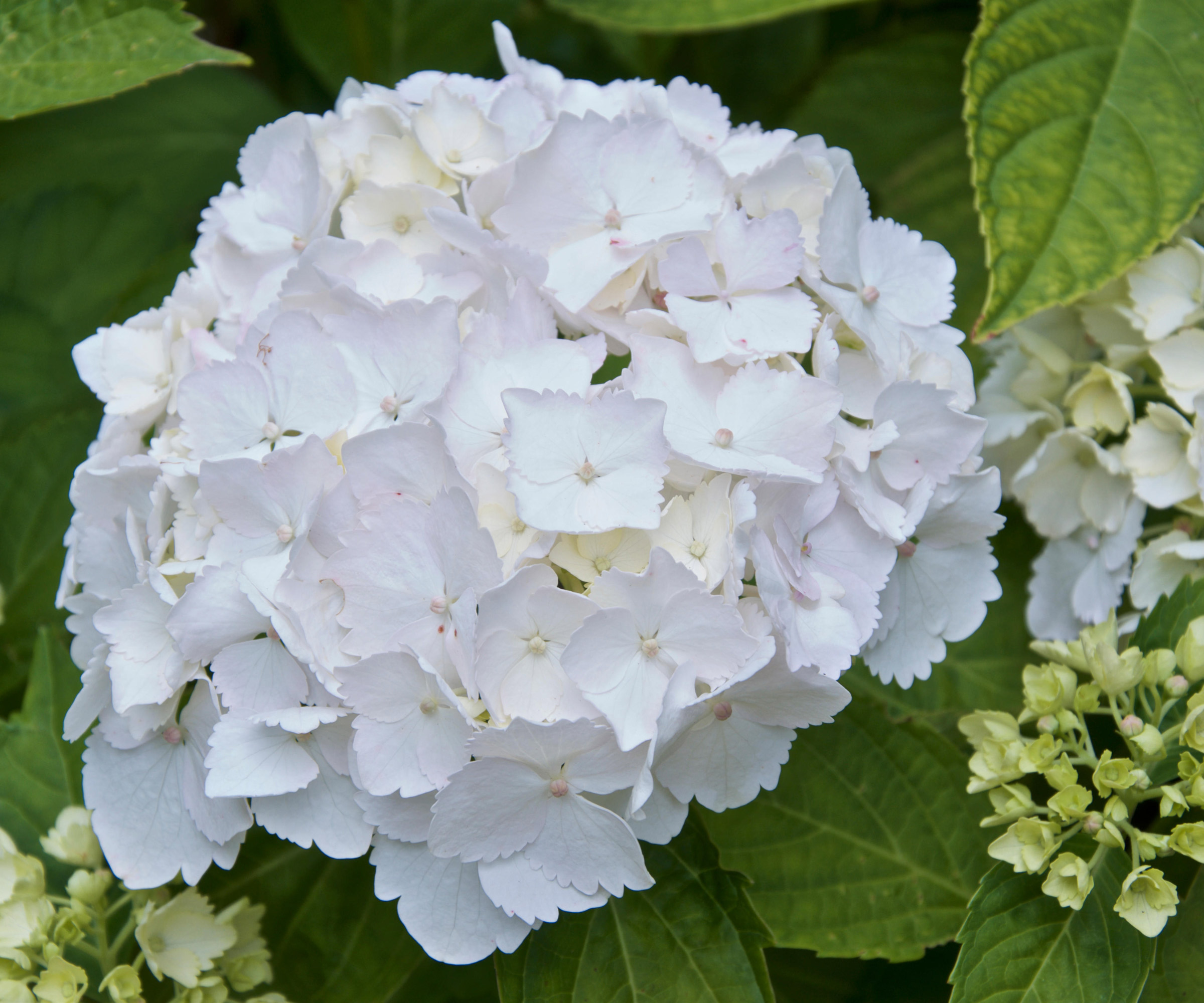
- Type: Mophead (Hydrangea macrophylla)
- Hardiness: USDA Z5
- Height: 4-5ft
- Good for: Full sun, containers
Although many hydrangeas are fine in shade, this classic white mophead does best in full sun and south facing garden ideas as well as containers. Popular for over 100 years, these types of hydrangea develop pretty pink freckles as they mature. Flowering midsummer to mid-fall, ‘Madame Emile Moullière’ also features rich autumn leaf color.
12. Hydrangea ‘Miss Saori’ (H2002)
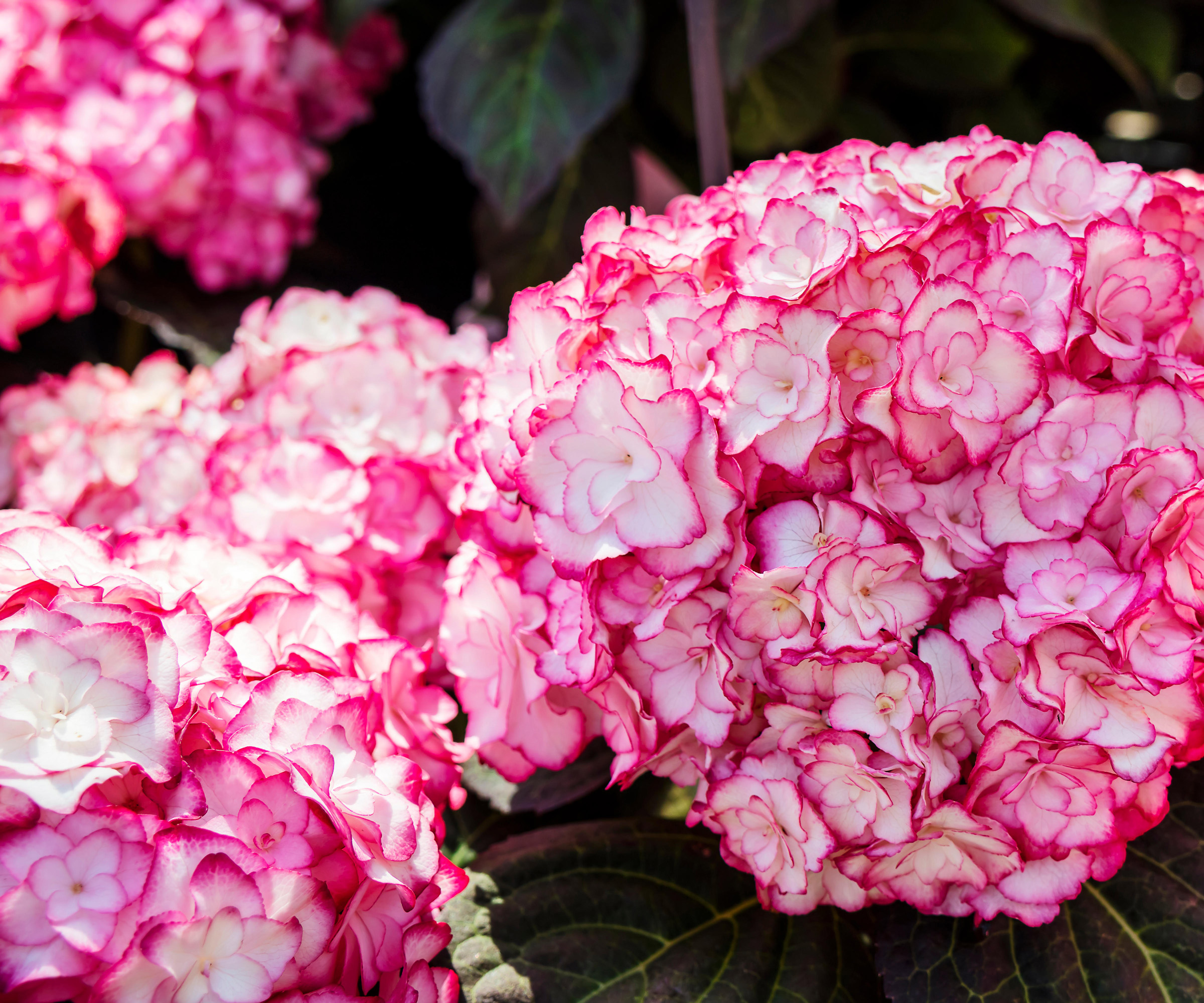
- Type: Mophead, repeat-flowering (Hydrangea macrophylla)
- Hardiness: USDA Z5
- Height: 3ft
- Good for: A big contribution to a small garden
Hydrangeas capable of making a big impact in a small space don’t come much more striking than ‘Miss Saori’ ('H2002'). A recent arrival, this dwarf mophead variety works equally well in a Japanese garden or traditional planting scheme. It combines dramatic double pink-edged white flowers and vibrant foliage over a long season. Blooming from early summer to mid-fall, it is one of the best hydrangeas for repeat-flowering.
13. Hydrangea petiolaris
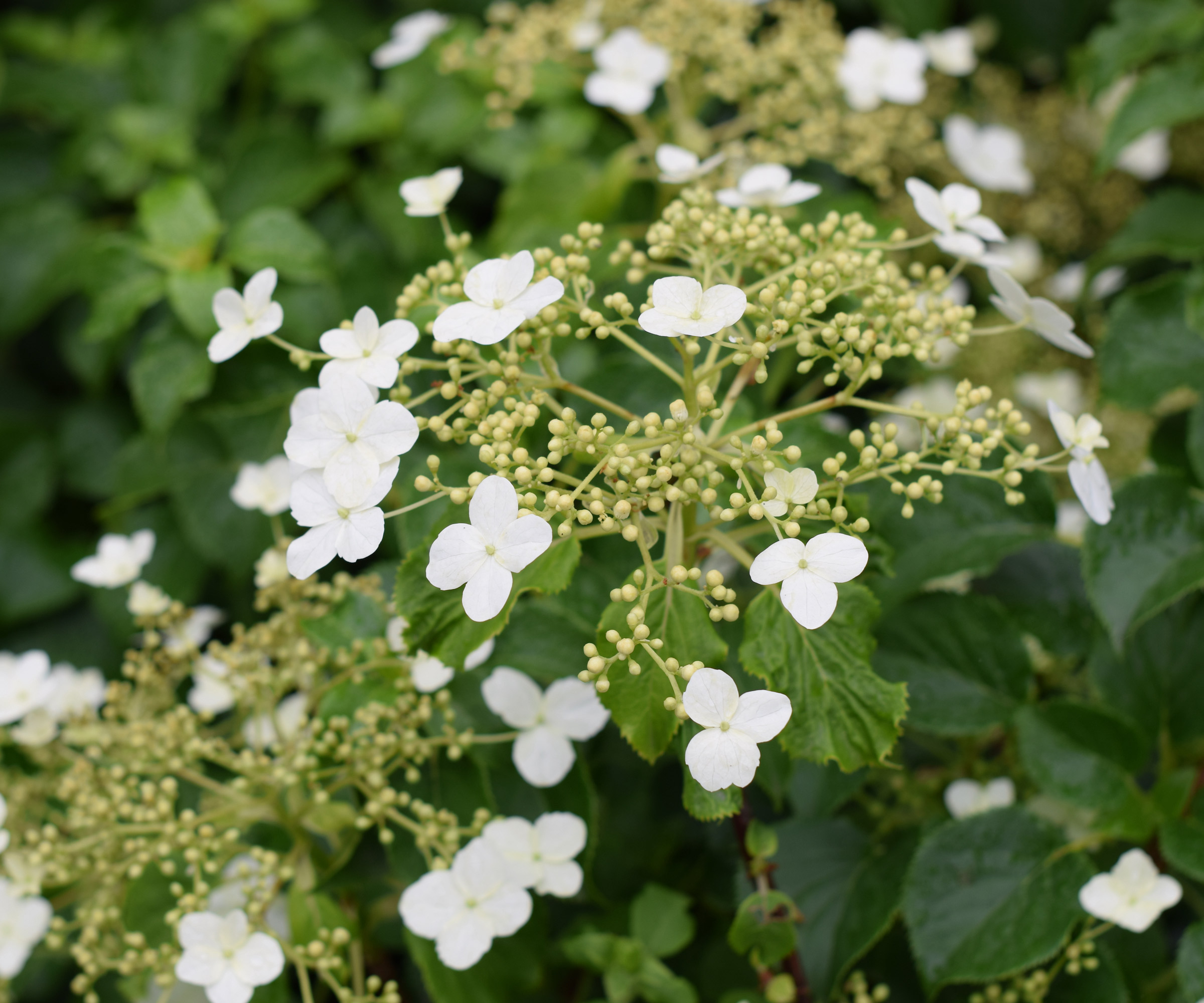
- Type: Lacecap (climber)
- Hardiness: USDA Z4
- Height: 12-50ft
- Good for: North-facing or shaded walls
Some of the best hydrangea varieties also make some of the best climbing plants you can grow. This lacecap climber thrives against a north-facing or shaded wall. Hydrangea petiolaris is a vigorous but slow-starting deciduous climber that works well with tall trees or tall buildings. Its large white lacecaps grow up to 10in across in early summer.
14. Hydrangea ‘Pinky-Winky’ (‘Dvppinky’)
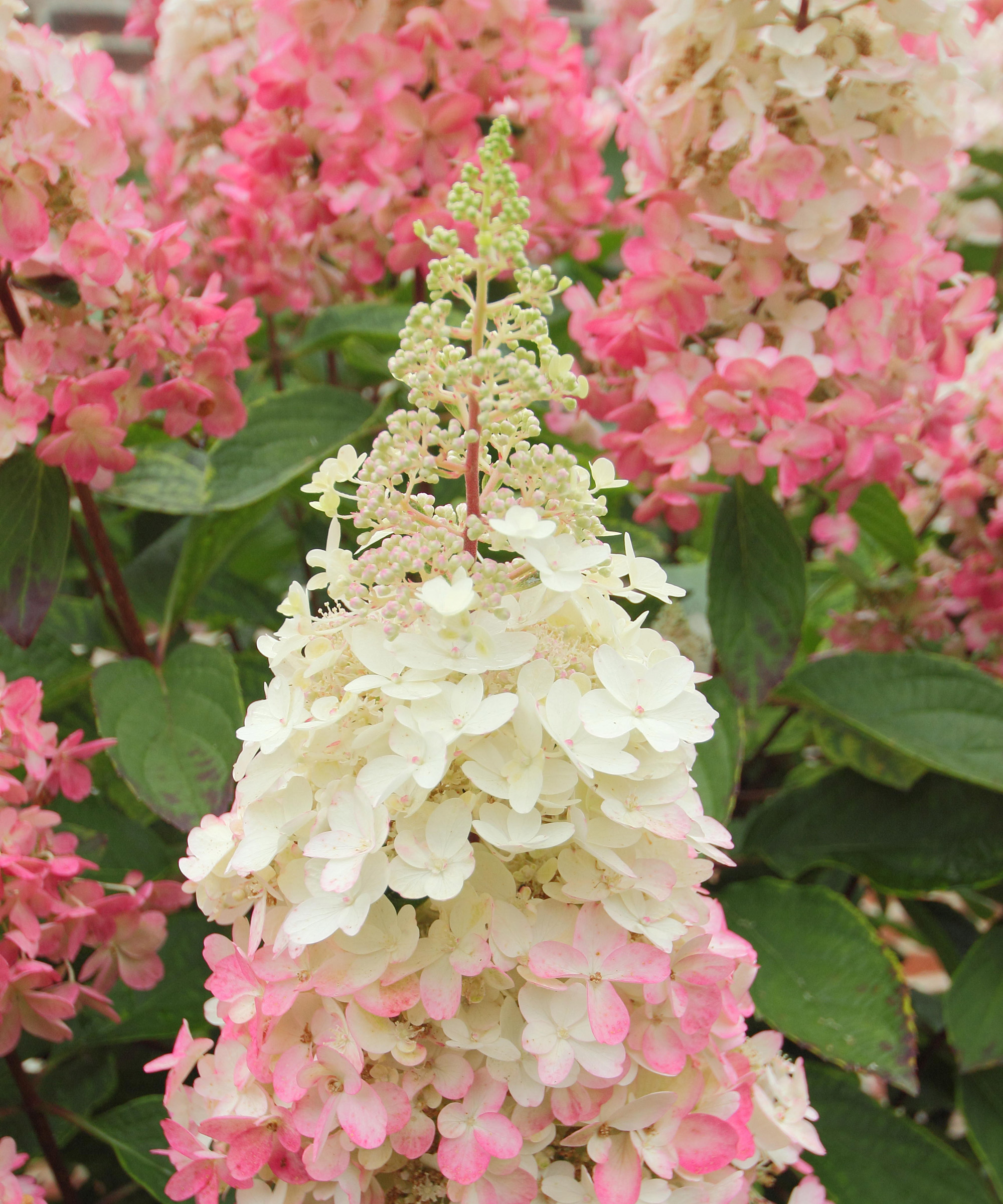
- Type: Cone-shaped (Hydrangea paniculata)
- Hardiness: USDA Z3
- Height: 4-8ft, depending on pruning
- Good for: Colorful impact, cold tolerance
Pinky-Winky (‘Dvppinky’) is one of the most unusual types of hydrangea. This cold-tolerant cone-shaped breed works well in creative garden color schemes and borders, and also makes a pretty specimen shrub. Flowering midsummer to fall, its large white cones of blooms turn pink from the base as the season develops, while new buds are still opening at the tips.
15. Hydrangea ‘Snowflake’ (‘Brido’)
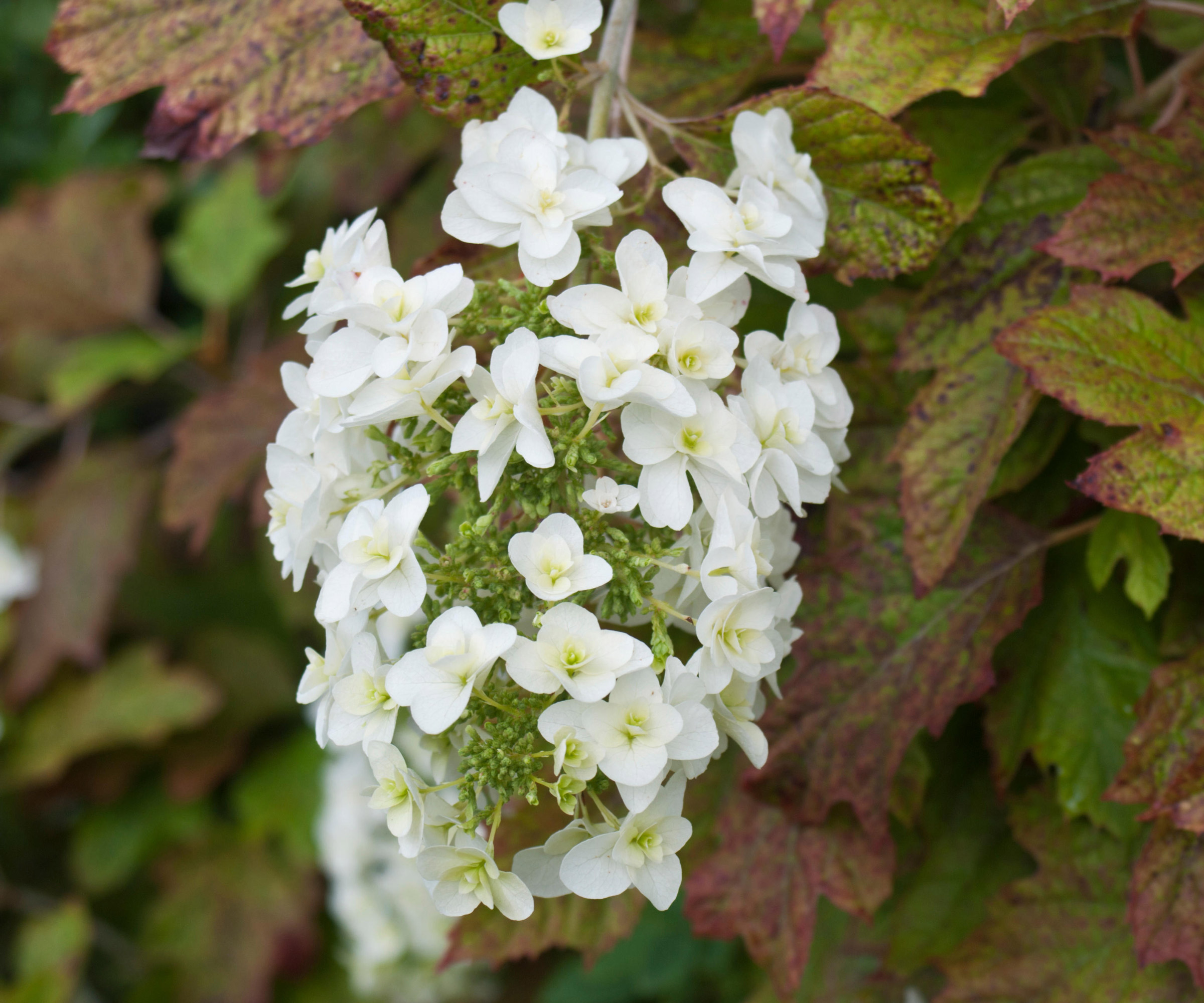
- Type: Double-flowered lacecap (Hydrangea quercifolia)
- Hardiness: USDA Z5
- Height: 5ft
- Good for: Small yards, multi-season color
One of the best low maintenance shrubs you can grow, ‘Snowflake’ (‘Brido’) is also ideal for small yards. Flowering from late summer to early fall, this double-flowered lacecap variety is one of the best hydrangeas you can grow for multi-season color. The spikes of fragrant white flowers are unusual in that each has two or three layers of petals for a much longer lasting display which eventually takes on pink tones with rich fall color.
FAQs
Which hydrangea varieties are North American natives?
There are four kinds of hydrangea varieties native to North America, but none of these actually grow wild in Canada. Representing some of the best flowering shrubs, the smooth or wild hydrangea (H. arborescens) grows from New York state south to Florida and Georgia. Oakleaf hydrangea (H. quercifolia) has a more limited distribution and grows from North Carolina south to Florida and Louisiana. These are widely seen in gardens, usually as one of their named varieties.
The ashy hydrangea (H. cinereal) is found wild from Illinois and Indiana south to Alabama and Georgia. Meanwhile, the silverleaf hydrangea (H. radiata) is found only in parts of the Carolinas, Tennessee and Georgia. These two are seen less often in gardens.
To ensure that varieties such as ‘Bluebird’ develop the best blue flowers, whatever your soil types, you need to apply a simple treatment with hydrangea colorant. It’s important to make soil more acidic for the relevant types of hydrangea so you can grow blooms with the bluest tones. You can get hydrangea colorant from garden centers or mail orders. Some gardeners recommend the cheaper option of throwing a few nails around each plant. Over time, nails provide the iron needed for blue flowers.







